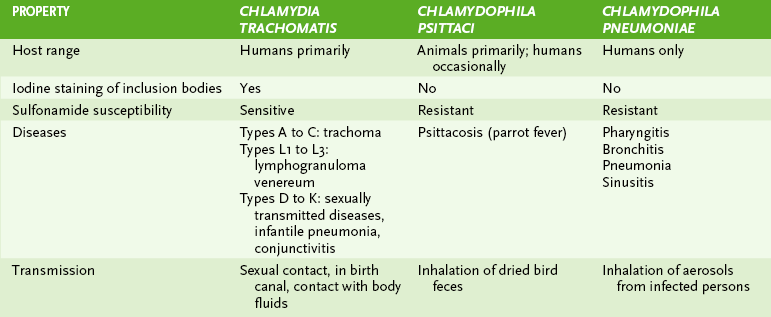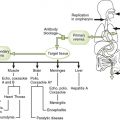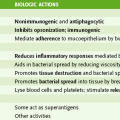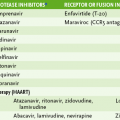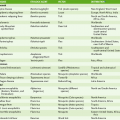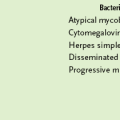Chapter 17 • Three chlamydial species are pathogenic for humans: C. trachomatis, C. psittaci, and C. pneumoniae (Table 17-1). A Shared chlamydial properties 1. Chlamydiae are very small, obligate intracellular bacteria. 2. They possess a cytoplasmic membrane and outer membrane but lack peptidoglycan layer (unlike gram-negative bacteria) and thus are insensitive to β-lactam antibiotics. a. Smaller, extracellular infectious form that is metabolically inert and resistant to harsh conditions • Ingested EB is converted to RB within a cytoplasmic phagosome. • RB replication by binary fission produces a large inclusion body containing numerous RBs, most of which are reorganized into EBs. • Extrusion of the inclusion body releases infectious EBs into extracellular environment and ruptures the cell. • Cytologic examination for iodine-staining inclusion bodies • Growth and isolation in cell culture • Polymerase chain reaction (PCR) • Detection of chlamydial antigens or nucleic acid sequences in clinical specimens • Types A through K infect nonciliated epithelial cells of mucous membranes, which have EB-binding receptors on their surface. a. These target cells are found in the urethra, vagina, fallopian tubes, anorectal tract, respiratory tract, and conjunctiva. • Types L1, L2, and L3 infect macrophages. • Destruction of target cells due to bacterial replication and severe host inflammatory reactions cause disease manifestations. 3. Chlamydial infections caused by types D through K (Box 17-1) • Transmitted by sexual contact or during passage through infected birth canal a. Asymptomatic infections are more common in women than in men. b. Symptomatic infections produce mucopurulent discharge, with dysuria or pyuria. • Ocular and neonatal infections
Chlamydiae and Zoonotic Intracellular Bacteria

